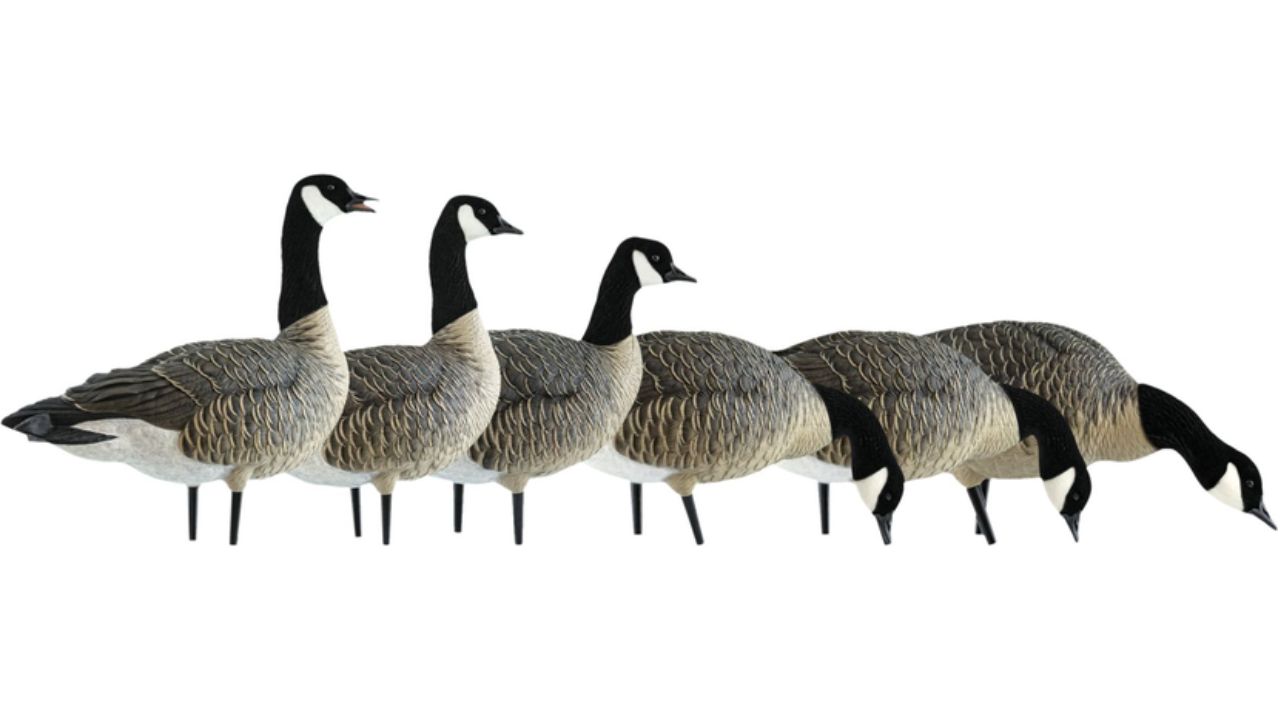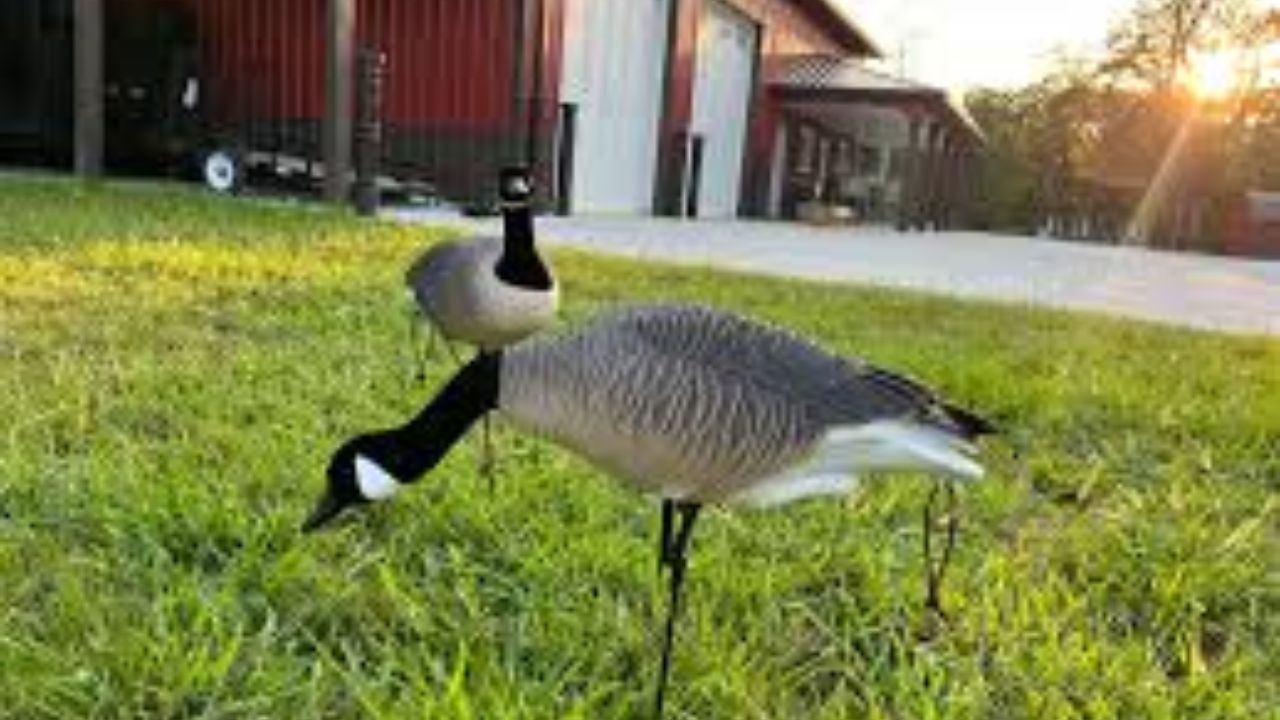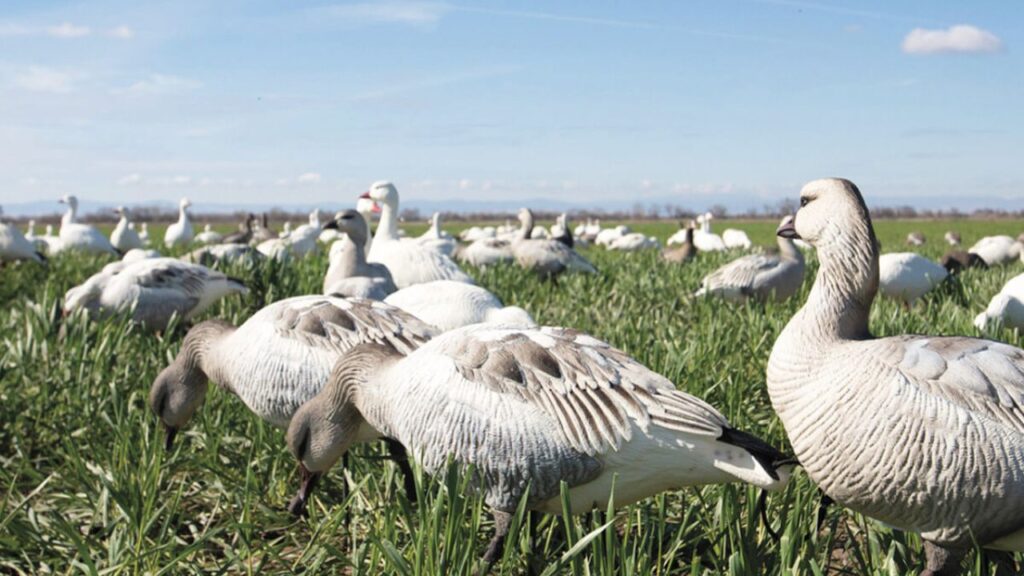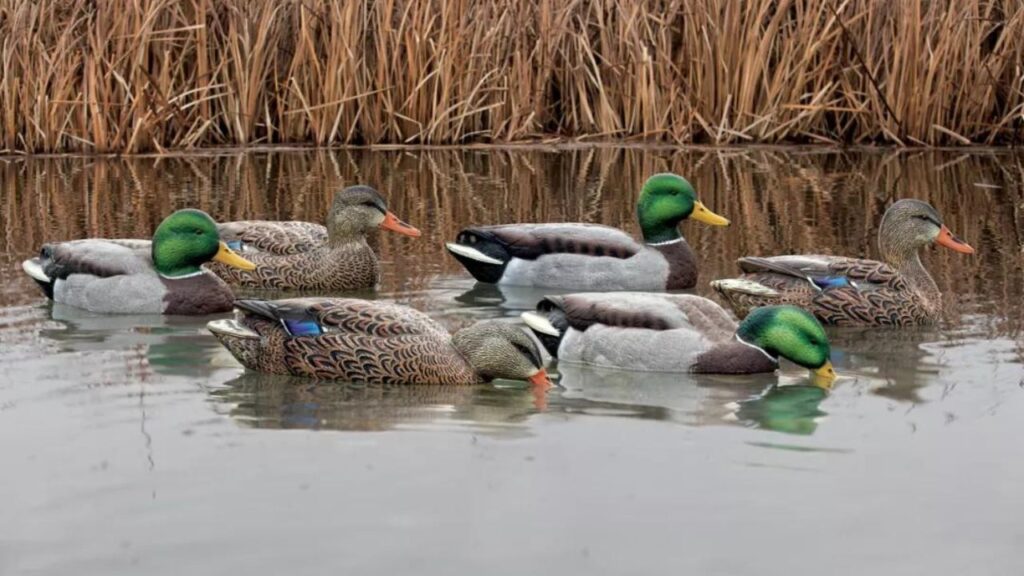Waterfowl hunting, an age-old tradition cherished by outdoor enthusiasts, demands a combination of skill, patience, and the right equipment. Among the essential tools in a hunter’s arsenal, none stand out quite like the humble goose decoy. These lifelike replicas play a pivotal role in luring geese within range, making them a crucial component of a successful hunt. In this blog post, we explore the world of goose decoys, revealing the varieties that any hunter ought to consider including in their collection. We examine the best options on the market, from full-body decoys that imitate the fine details of genuine geese to cutting-edge motion decoys intended to add realism.
Whether you’re a seasoned waterfowl hunter or a newcomer to the sport, understanding the nuances of avian x goose decoy is key to enhancing your chances of a fruitful hunt. Join us as we navigate through the different types and considerations for choosing the right decoy, and highlight some of the top-rated models that can elevate your waterfowl hunting experience. Get ready to transform your decoy spread into an irresistible spectacle that brings the geese right to your blind.
Options for Decoys to Expand Your Armoury

When you can hunt on a specific area of land, it is time to bring the geese over there. Here’s where decoys are useful. Decoys usually imitate three main activities of geese: swimming, feeding, and sleeping. Additionally, the behaviours of geese may vary slightly depending on where you hunt; however, in terms of decoys, the more realistic, the better. The problem lies in the fact that geese learn fast, have excellent vision, and adjust to new hunting techniques. After being shot a few times, though, everything changes, and it takes persuasion to get them to come down and finish. From the time that Native Americans utilized handcrafted reed decoys to the carved, painted, and cork decoys that followed, floating goose decoyshave evolved significantly. These days, decoys come in a wide variety of pricing points and body types. Hence, it’s critical to understand the differences between them and the specific purposes for which they’re intended.
Decoy quality vs quantity is a topic of constant discussion among hunters, but there are a few things to consider. You can get away with placing small family groups of less polished-looking decoys early in the season. Geese have been under pressure later in the season, so they are more cautious of anything that appears unrealistic. PIÈGE OUELL BRASS WIRE FOR HARE SNARES When hunting in the later part of the season, you should use all of your decoys, placing the best-looking ones in the middle of your spreads. You can still use your less-than-ideal decoys, but you should place them closer to you so your best decoys will attract the geese before they see your less-than-ideal ones.
Decoys with Silhouettes

Decoys called “silos” or silhouettes are designed to simulate geese nibbling on food off the ground. Their main purpose is to provide an affordable means of creating a wide dispersion. Decoys of this kind can be deployed alone or in combination with whole bodies. Set up these decoys to appear as though they are approaching you. Silo decoys are available in “black and white,” AVIAN-X Topflight Honker Floaters Goose Decoys which appear to pop slightly from a distance, as well as a realistic photo finish. Nevertheless, certain silhouette decoy brands shine in direct sunlight, so they’re not always the best choice for sunny days.
Completely-Bodied Decoys
Often, the most expensive, full-bodied goose decoy have the most genuine appearance. While some geese appear to be immobile, full-body decoys give the impression that they are moving. These decoys are fixed by huge black feet on metal platforms rather than plastic ones. Typically, full-body decoys are offered in painted and flocking finishes. You will spend more time dusting off decoys than blind people if you hunt in snowy weather, so leave the completely avian x goose decoys in the trailer. This decoy’s realistic appearance makes it a fantastic option for hunting flocks that are accustomed to decoys from previous hunting circumstances.
Shells
Made of hollowed-out plastic, shells are easier to stack and move than full-body decoys. For a lower cost, shells are an excellent method to create the illusion of having a large number of geese. Shell decoys are fixed with metal stands; they have no legs. Almost typically, shells are utilized as a “sleeper” ruse. Sleeper shells are wildly effective near an ice shelf on a river where birds are coming to loaf midday and equally effective in a feed scenario. Dakota Decoy X-Treme Snow Goose Floaters 6 PACK As this is how geese sleep by nature, you should always face the front of a sleeping person toward the wind.
Floaters
When hunting over a water source, arrange avian x snow goose decoys in the most enticing and realistic formation, just like you would when hunting in a field. Use your surroundings to guide the geese into shot range when you’re in the water, just like you would in a field.
Duck Socks
The decoy spread moves with the help of avian x goose floaters socks. The thin shell is meant to dance with the wind and draw geese in from a great distance. When the wind picks up, the decoy’s body fills and creates the impression that feeding geese are flying around. Avian-X Snow Goose Decoys 10 Pack Goose socks are used to simulate a vast flock and are typically utilized in groups of three or more dozen at a time.
Goose Bumps
The hunter holds a goose flag in his hand and uses it to signal distant geese to come closer by imitating a bird landing. When he spies a flock of geese in the distance, he will wave his flag as loudly as possible. This will draw their attention and divert them to explore the rest of his spread.
Tips for Using Goose Decoys Effectively

Creating an enticing decoy spread is a nuanced art that requires strategic planning and thoughtful execution. To maximize your success in waterfowl hunting, consider the following tips for using avian x sleeper shells effectively:
Placement Strategies:
Wind Direction Considerations:
- Set up your decoys with the wind at your back so incoming geese face the breeze.
- Mimicking natural behaviour helps in convincing geese to land.
Realistic Decoy Spreads:
- Vary the distance between decoys to imitate the spacing of live geese.
- Incorporate different postures, including feeding, AVIAN-X TOP FLIGHT REDHEAD DECOYS resting, and alert positions, for added realism.
Movement and Motion Decoy Integration:
Importance of Motion:
- Incorporate motion decoys, such as flapping wings or moving heads, to simulate live geese.
- Motion attracts attention and can be especially effective on calm days.
Types of Motion Decoys:
- Experiment with different types of motion decoys, including spinning wings or rocking bases.
- Use subtle movements to create a natural and non-threatening environment.
Realism is Key:
Blend with the Environment:
- Camouflage your blinds and concealment to avoid spooking approaching geese.
- Ensure that decoy colours match the natural surroundings for a seamless blend.
Decoy Quality Matters:
- Invest in high-quality decoys with realistic paint finishes and durable materials.
- Regularly inspect and maintain decoys to preserve their lifelike appearance.
Understanding Goose Behavior:
Study Local Goose Species:
- Familiarize yourself with the specific species of geese in your hunting area.
- Tailor your decoy spread to match the size, colour, and behaviour of the local population.
Adapt to Seasonal Changes:
- Adjust your decoy setup based on seasonal changes in goose behaviour.
- Use different spreads for early season, The Ultimate Guide to Watching Ducks in Flight in Massey, MD migration periods, and late-season hunting.
Patience and Observation:
Wait for the Right Moment:
- Exercise patience and resist the urge to call or shoot too early.
- Wait for the geese to commit fully to the decoy spread before taking action.
Learn from Observations:
- Observe how geese react to your decoy spread and adjust accordingly.
- Pay attention to subtle cues and adapt your strategy for each hunting session.
By implementing these suggestions, you may improve the efficiency of your goose decoy spread and raise your chances of having a productive waterfowl hunting trip. Whether you’re a novice or an experienced hunter, refining your decoy tactics can make a significant difference in attracting and luring geese within shooting range.
Maintenance and Care Tips for Goose Decoys

Ensuring the longevity and effectiveness of your full-body goose decoys requires regular maintenance and proper care. Here are essential tips to keep your decoys in optimal condition season after season:
Cleaning and Storage:
Remove Dirt and Debris:
- Clean decoys thoroughly after each use to remove mud, dirt, and vegetation.
- Use a mild soap and water solution to avoid damaging paint and materials.
Inspect for Damage:
- Examine each decoy for any cracks, chips, or wear and tear.
- Repair minor damages promptly to prevent further deterioration.
Dry Thoroughly:
- Allow decoys to air-dry completely before storing to prevent mold and mildew.
- Ensure all components, such as stakes and motion devices, are also dry.
Repairing Damages:
Patch and Seal:
- Use appropriate adhesives or sealants to patch small cracks or holes in the decoy body.
- Ensure the repairs are waterproof and MOJO RIPPLER 2 durable.
Replace Worn Components:
- Check stakes, anchors, and any moving parts for signs of wear.
- Replace damaged or worn components to maintain functionality.
Longevity and Investment Considerations:
Invest in Quality Materials:
- Purchase decoys made from durable and weather-resistant materials.
- Higher-quality materials contribute to the longevity of your investment.
Rotate Decoys:
- Rotate the placement of decoys within your spread to distribute wear evenly.
- Prevent overexposure of specific decoys to the elements.
Store Properly:
- Store decoys in a cool, dry place to prevent damage from extreme temperatures.
- Consider investing in decoy bags or bins to protect them during transportation and storage.
Regular Inspections:
Pre-Season Checkup:
- Conduct a thorough inspection before the hunting season begins.
- Address any issues and ensure all decoys are in proper working order.
Mid-Season Checks:
- Periodically assess the condition of your decoys during the hunting season.
- Make on-the-spot repairs and adjustments as needed.
Environment-Specific Care:
Adapt to Different Conditions:
- Modify your care routine based on the specific environmental conditions in your hunting area.
- Consider additional protective measures in harsh weather or extreme temperatures.
By incorporating these maintenance and care tips into your routine, you’ll not only extend the life of your goose floaters but also ensure their continued effectiveness in attracting waterfowl. A well-maintained decoy spread contributes significantly to a successful and enjoyable waterfowl hunting experience.
Conclusion
In the world of waterfowl hunting, goose floaters are a timeless strategy, bridging the gap between hunters and their avian targets. As we conclude this exploration into the realm of goose decoys, it’s evident that these seemingly simple tools hold the key to a more successful and fulfilling hunting experience. From the lifelike realism of full-body decoys to the versatility of shell decoys and the strategic incorporation of motion decoys, hunters have an array of options to craft decoy spreads that are both convincing and captivating. Each type has its unique advantages, making the selection process a critical aspect of a hunter’s preparation.
Considerations such as realism, durability, size, and understanding local goose behaviour are paramount when choosing and utilizing goose decoys effectively. Whether you are a seasoned hunter or just beginning your waterfowl journey, these considerations, coupled with the right selection of decoys, can significantly enhance your chances of a successful hunt. Maintenance and care should be noticed, as the longevity of your decoy investment directly impacts their ongoing effectiveness. Regular cleaning, prompt repairs, and proper storage contribute to the sustained allure of your decoy spread, season after season.
As you venture into the wetlands or fields, armed with your chosen goose decoys, remember the art and science behind their deployment. Patience, observation, and a nuanced understanding of goose behaviour will serve you well. Adapt your strategies to the ever-changing conditions, and let the realistic allure of your decoy spread beckon geese to your hunting blind. May your decoys prove irresistible, your aim true, and your waterfowl hunting experiences memorable. Happy hunting!



